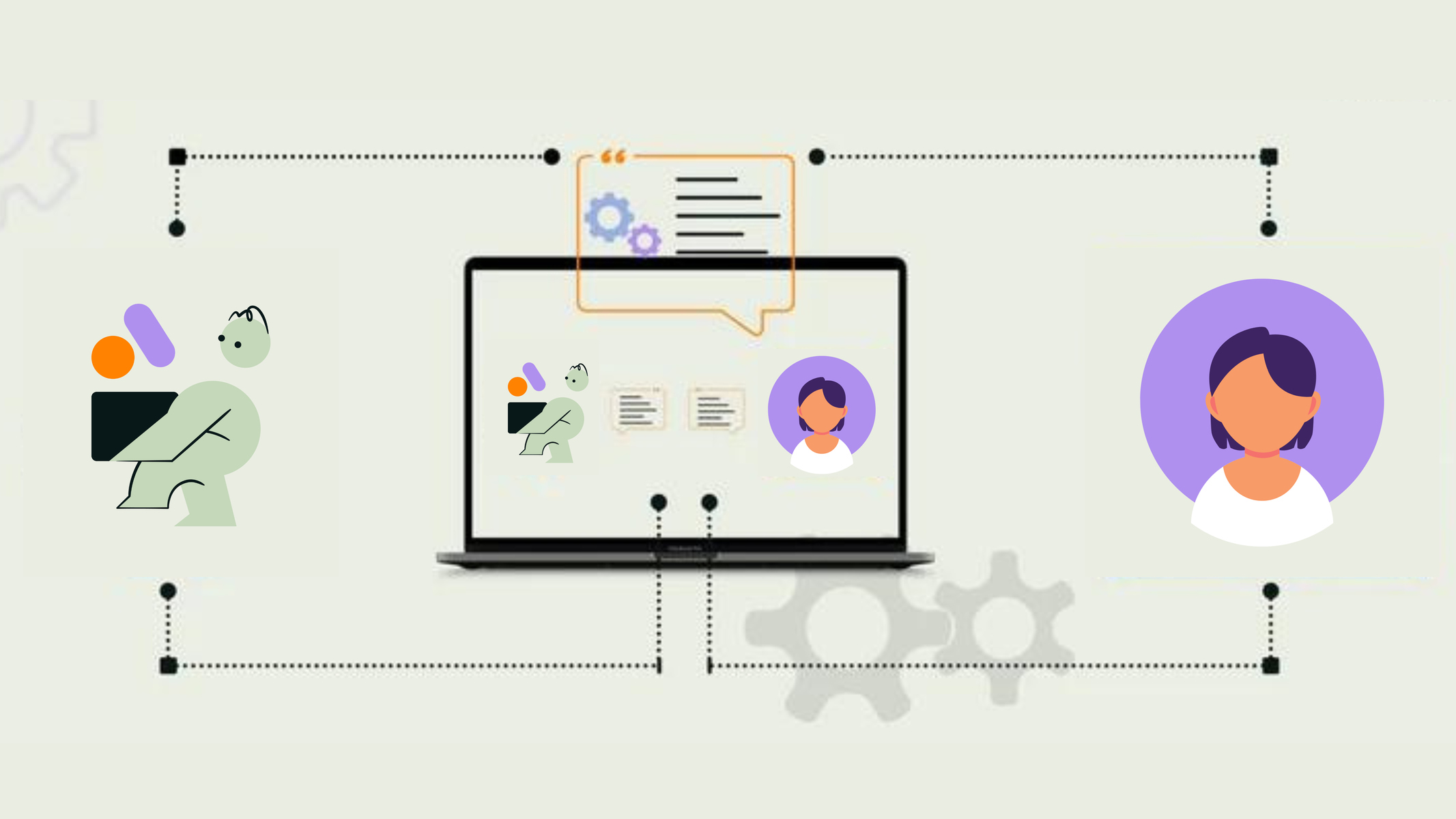Definition of Crowdfunding
Crowdfunding is a method of raising funds for a project or venture through small contributions from a large number of individuals, typically via the internet. It allows entrepreneurs, artists, and individuals with innovative ideas to bypass traditional funding avenues and directly connect with potential backers.
The concept of crowdfunding revolves around the idea of “the power of the crowd.” Instead of relying on a single source of funding, such as a bank loan or venture capitalist, crowdfunding harnesses the collective support of a community to fuel the growth of a project. Through online platforms dedicated to crowdfunding, creators can present their ideas or products and invite people to contribute small amounts of money in exchange for various rewards or equity shares.
The process of crowdfunding usually involves setting a specific funding target accompanied by a deadline. Individuals who resonate with the project can make contributions of varying amounts, and the total funds collected are only released if the target is reached within the specified timeframe. This model ensures a level of security for backers, as they are assured that their money will only be used if the project receives sufficient support.
Crowdfunding takes various forms, including reward-based crowdfunding, donation-based crowdfunding, and equity crowdfunding. Reward-based crowdfunding offers backers non-financial rewards, such as early access to the product or exclusive merchandise. Donation-based crowdfunding involves collecting funds for charitable causes or supporting social initiatives. Equity crowdfunding enables contributors to become partial owners of a company, often in the form of shares or convertible notes.
Overall, crowdfunding provides an innovative alternative to traditional fundraising methods, enabling individuals to turn their dreams into reality by breaking down financial barriers and gaining support from a widespread network of individuals who believe in their vision.
Definition of Crowdsourcing
Crowdsourcing is a method of obtaining services, ideas, or content from a large group of people, typically through an open call or online platform. It leverages the collective intelligence and skills of the crowd to solve problems, generate creative solutions, and accomplish tasks that would be challenging for a single individual or a small team.
The concept of crowdsourcing is based on the principle that diverse perspectives and contributions from a large group can produce superior results compared to the efforts of a few experts. By tapping into the collective knowledge and expertise of a crowd, organizations can access a vast pool of talent and resources that would otherwise be inaccessible or costly to obtain.
Crowdsourcing can be applied to a wide range of domains, including innovation, marketing, product development, research, and design. It involves breaking down a complex problem or project into smaller tasks that can be distributed to individuals or groups within the crowd. The results and contributions from the participants are then consolidated and analyzed to achieve the desired outcome.
There are different types of crowdsourcing, such as knowledge-based crowdsourcing, creative crowdsourcing, and micro-task crowdsourcing. Knowledge-based crowdsourcing involves seeking expertise or information from the crowd, such as seeking advice on a specific topic or conducting market research. Creative crowdsourcing involves engaging the crowd in generating ideas, designs, or solutions to a problem. Micro-task crowdsourcing involves dividing a larger task into smaller, discrete, and manageable tasks that can be completed by individual contributors.
The benefits of crowdsourcing are numerous. It allows organizations to access a diverse range of perspectives and ideas, fostering innovation and creativity. It can also accelerate the completion of projects by distributing tasks to a large number of participants simultaneously. Moreover, crowdsourcing promotes engagement and collaboration, enabling individuals from different backgrounds to contribute and learn from each other. Additionally, it can be a cost-effective approach compared to traditional hiring or outsourcing methods.
In summary, crowdsourcing is a powerful technique that harnesses the collective wisdom and capabilities of a crowd to tackle complex problems, generate novel solutions, and enhance the efficiency of various processes across different industries.
Purpose of Crowdfunding
Crowdfunding serves several purposes, making it an attractive option for entrepreneurs, innovators, and individuals seeking financial support for their projects. The primary purposes of crowdfunding include:
1. Raising Capital: One of the main purposes of crowdfunding is to raise capital to turn ideas into reality. It provides a platform for individuals who may struggle to secure funding through traditional channels, such as loans or investment from venture capitalists. Through crowdfunding, creators can access a broad base of potential backers willing to contribute small amounts of money, collectively reaching the funding target needed to initiate or advance their projects.
2. Market Validation: Crowdfunding is an effective way to validate market demand for a product or idea. By presenting their projects to a wide audience, entrepreneurs can gauge interest and receive early feedback and support. The level of financial backing received can serve as a metric to assess the viability and market potential of the venture. This validation can be crucial for attracting further investment or scaling up the project.
3. Building a Community: Crowdfunding allows creators to build and engage with a dedicated community of supporters, often referred to as backers or investors. By involving backers in the project from its early stages, entrepreneurs can cultivate a sense of ownership and loyalty among their supporters. This community can become advocates for the project, helping to spread the word, provide feedback, and contribute to its success even after the crowdfunding campaign concludes.
4. Marketing and Promotion: Crowdfunding serves as a powerful marketing tool. By showcasing their projects on crowdfunding platforms, creators can generate visibility and attract attention from a wide range of potential customers, investors, and media outlets. Successful crowdfunding campaigns often receive media coverage and social media buzz, further enhancing the project’s exposure and raising its profile within the target market.
5. Launching New Products or Services: For innovators and entrepreneurs, crowdfunding can be a means to introduce new products or services to the market. By pre-selling their offerings or offering exclusive early access and perks to backers, creators can gather crucial data and initial user feedback before going into full production. This iterative feedback loop allows for product improvements and ensures that the final version meets the needs and expectations of the target audience.
Crowdfunding serves as a versatile tool, providing a platform for individuals to not only raise funds but also validate ideas, build communities, promote projects, and launch new products or services. It has transformed the way entrepreneurs access capital and engage with their target market, offering new opportunities for innovation and entrepreneurial growth.
Purpose of Crowdsourcing
Crowdsourcing serves a multitude of purposes across various industries and domains, offering organizations and individuals numerous benefits. The primary purposes of crowdsourcing include:
1. Access to Diverse Skills and Expertise: One of the key purposes of crowdsourcing is to tap into the collective intelligence and skills of a diverse group of people. By opening up the problem-solving or idea generation process to a larger crowd, organizations can access a wide range of perspectives, experiences, and expertise that may not be available within their internal teams. This diversity of knowledge can lead to innovative solutions, creative ideas, and breakthrough insights.
2. Cost-Effective Resource Acquisition: Crowdsourcing allows organizations to access resources in a cost-effective manner. Instead of relying solely on internal staff or hiring specialized professionals, crowdsourcing enables organizations to distribute tasks among a large number of contributors, often at a fraction of the cost. This approach can significantly reduce expenses associated with recruitment, training, and retaining full-time employees or outsourcing to specialized agencies.
3. Accelerated Problem Solving: Crowdsourcing enhances problem-solving capabilities by harnessing the collective power of a crowd. By distributing tasks to the crowd, organizations can effectively divide complex problems into smaller, more manageable components. This approach accelerates the problem-solving process by allowing multiple contributors to work simultaneously on different aspects of the problem, leading to faster and more efficient solutions.
4. Idea Generation and Innovation: Crowdsourcing is an effective way to generate a large number of ideas and foster innovation. By engaging a diverse crowd in the ideation process, organizations can harness creativity from different perspectives and backgrounds. The collaborative nature of crowdsourcing encourages participants to build upon each other’s ideas, leading to novel and groundbreaking concepts that may not have emerged through traditional brainstorming sessions.
5. Engagement and Community Building: Crowdsourcing can serve as a means to engage and build a community around a project or cause. By involving the crowd and allowing them to contribute to the decision-making process, organizations can create a sense of ownership and belonging. This engagement fosters a loyal and passionate community that can become brand advocates, provide ongoing feedback, and support the organization’s goals in the long term.
6. Scalability and Flexibility: Crowdsourcing offers scalability and flexibility, allowing organizations to adjust resources and efforts based on their needs. Whether it’s a small-scale task or a large-scale project, organizations can leverage the crowd to allocate resources accordingly. This flexibility enables organizations to tackle a broad range of projects, from small-scale micro-tasks to complex and time-sensitive endeavors, without being limited by internal capacity constraints.
Crowdsourcing serves as a powerful tool to access diverse skills, drive innovation, solve complex problems, and engage communities. By leveraging the collective intelligence of the crowd, organizations can overcome challenges, unlock new ideas, and achieve outcomes that may not have been possible through traditional methods alone.
Funding Method in Crowdfunding
Crowdfunding offers various funding methods that provide individuals and businesses with opportunities to raise capital for their projects. The main funding methods used in crowdfunding include:
1. Reward-based Crowdfunding: Reward-based crowdfunding is one of the most common funding methods. In this model, project creators offer a range of rewards or perks to individuals who contribute to their campaign. These rewards can be tiered based on the contribution amount and can include anything from early access to the product, exclusive merchandise, or personalized experiences. This approach appeals to individuals who are not necessarily seeking financial returns but are motivated by the unique incentives offered by the creator.
2. Donation-based Crowdfunding: Donation-based crowdfunding focuses on collecting funds for charitable causes or supporting specific social initiatives. Individuals or organizations can create campaigns to raise money for causes such as disaster relief, medical expenses, community projects, or nonprofit organizations. Supporters contribute funds without expecting any financial returns but are driven by the desire to make a positive impact and support meaningful causes.
3. Equity Crowdfunding: Equity crowdfunding enables individuals to invest in a company or venture in exchange for equity or shares. This funding method allows investors to become partial owners of the business and potentially benefit from any future profits or growth. Equity crowdfunding is subject to regulations and may require platforms to verify the accreditation of investors, ensuring that they meet certain income or net worth requirements.
4. Debt Crowdfunding: Debt crowdfunding, also known as peer-to-peer lending, involves individuals or businesses borrowing money from a group of lenders through an online platform. Borrowers repay the borrowed amount, along with interest, over a specified period. Debt crowdfunding provides an alternative to traditional loans from financial institutions, offering flexible terms and potentially lower interest rates.
5. Donation with Equity Crowdfunding: This funding method combines elements of donation-based and equity crowdfunding. It allows backers to donate funds to a project or cause and, in return, receive equity or shares in the company. This model offers individuals the opportunity to support a cause they care about while also gaining potential financial returns as the business grows.
Each funding method in crowdfunding serves different purposes and appeals to different types of backers and project creators. It is essential for project creators to carefully consider their goals and target audience when choosing the appropriate funding method. Similarly, backers should understand the terms and risks associated with each funding method to make informed decisions about their contributions.
Task Distribution in Crowdsourcing
Task distribution is a critical aspect of crowdsourcing, as it involves dividing complex projects or tasks into smaller, more manageable components that can be assigned to individuals or groups within the crowd. The process of task distribution in crowdsourcing typically follows these key steps:
1. Task Breakdown: The first step in task distribution is to break down the larger project or task into smaller, discrete components. This involves identifying the individual tasks that need to be completed to achieve the overall objective. Breaking down the task allows for more efficient distribution and helps ensure that each component is clear, well-defined, and manageable for contributors.
2. Task Classification: Once the tasks are identified and defined, they are classified into different categories based on complexity, skill requirements, or the expertise needed. This categorization helps in selecting suitable contributors who possess the necessary skills, knowledge, or experience to complete each specific task successfully. It ensures that tasks are assigned to individuals or groups with the appropriate abilities and reduces the risk of mismatched assignments.
3. Task Allocation: After the tasks are classified, they are allocated to individuals or groups within the crowd who are best suited to handle them. The allocation can be based on various factors, such as contributors’ expertise, availability, or preferences. To ensure fairness and efficiency, platforms may use algorithms or matching mechanisms to distribute tasks based on contributors’ profiles and qualifications.
4. Task Guidelines and Instructions: Clear and comprehensive guidelines and instructions are provided to each individual or group assigned to a task. These guidelines outline the objectives, expectations, deadlines, deliverables, and any specific requirements for each task. Detailed instructions help contributors understand the task requirements, perform their roles effectively, and produce high-quality outputs.
5. Task Monitoring and Quality Control: Throughout the task execution phase, project managers or platform administrators usually monitor the progress and quality of the tasks. They ensure that contributors adhere to the guidelines and provide support or feedback as needed. Quality control measures, such as reviews, validations, or peer assessments, may also be implemented to maintain the accuracy and reliability of the outputs.
6. Task Collaboration and Communication: Depending on the nature of the project, collaboration and communication among contributors may be encouraged. Platforms or tools that facilitate collaboration, such as project management software or discussion forums, can be employed to promote effective communication and information sharing among contributors. Collaborative efforts enhance the synergy within the crowd and contribute to the success of the overall project.
Task distribution in crowdsourcing enables efficient resource utilization, accelerates project completion, and leverages the diverse skills and expertise of a large number of participants. By breaking down complex tasks and assigning them to qualified individuals or groups within the crowd, organizations can tap into a pool of talent and accomplish projects that would be difficult or time-consuming to tackle with a smaller team alone.
Benefits of Crowdfunding
Crowdfunding offers numerous benefits for entrepreneurs, creators, and individuals seeking financial support for their projects. Some of the key benefits of crowdfunding include:
1. Access to Capital: One of the primary benefits of crowdfunding is the ability to access capital for projects that may struggle to secure funding through traditional avenues. By tapping into a large pool of potential backers, creators have the opportunity to raise funds directly from individuals who believe in their ideas. This democratization of capital allows projects to gain traction and move forward without relying solely on banks or venture capitalists.
2. Market Validation: Crowdfunding serves as a platform to validate the demand and market viability of a product or idea. By presenting a project to potential backers, creators can receive early feedback and gauge interest in their offering. The level of financial support received during crowdfunding acts as a strong indicator of market demand, providing validation and assurance to both creators and future investors.
3. Building a Community: Crowdfunding allows project creators to build a dedicated and engaged community of supporters. By involving backers from the early stages of a project, creators can develop a loyal community of individuals who are invested in the success of the venture. This community can provide ongoing support, spread the word about the project, and contribute valuable insights and feedback.
4. Marketing and Promotion: Crowdfunding provides an excellent opportunity for creators to generate visibility and promote their projects. By showcasing their ideas on crowdfunding platforms, creators can attract attention from a wide range of potential customers, investors, and media outlets. Successful crowdfunding campaigns often gain media coverage and social media buzz, further increasing exposure and raising the project’s profile.
5. Early Adoption and Customer Engagement: By offering rewards or early access to backers, crowdfunding campaigns allow creators to secure early adopters for their products or services. This early customer engagement provides valuable insights and feedback, which can be used to refine and improve the offering before wider market release. Backers who are involved from the beginning often become passionate advocates and brand ambassadors, helping to spread the word and drive further adoption.
6. Flexibility and Control: Crowdfunding allows creators to maintain control over their projects and retain ownership of their ideas. Unlike traditional funding methods, where creators may have to give up a portion of their equity or succumb to external influence, crowdfunding provides a more independent platform for raising funds. Creators can dictate the terms, rewards, and objectives of their campaigns, maintaining creative control and preserving their vision.
Overall, crowdfunding offers a range of benefits, including access to capital, market validation, community building, marketing opportunities, early customer engagement, and increased control over projects. It empowers individuals to bring their ideas to life, build enthusiastic communities, and gain support from a diverse network of backers who passionately believe in their vision.
Benefits of Crowdsourcing
Crowdsourcing brings numerous benefits to organizations and individuals alike, harnessing the collective intelligence and capabilities of a diverse crowd. The key benefits of crowdsourcing include:
1. Access to Diverse Skills and Expertise: Crowdsourcing allows organizations to tap into a vast pool of talent and expertise that may not be available within their internal teams. By opening up the problem-solving or idea generation process to a larger crowd, organizations can access diverse perspectives, knowledge, and skills that can lead to innovative solutions and insights beyond what a limited group can provide.
2. Cost-Effective Resource Acquisition: Crowdsourcing provides a cost-effective approach to acquiring resources. Instead of hiring full-time employees or engaging specialized agencies, organizations can distribute tasks among a crowd of contributors. This approach reduces the costs associated with recruiting, training, and retaining full-time employees or outsourcing tasks to specialized providers, making it an effective way to allocate resources within budget constraints.
3. Accelerated Problem Solving: By engaging a crowd of contributors, crowdsourcing can accelerate problem-solving processes. Instead of relying on the efforts of a limited team, organizations can distribute tasks to a large number of participants who can work simultaneously on different aspects of the problem. This collaborative approach enables faster and more efficient problem solving, leading to quicker resolutions and innovations.
4. Idea Generation and Innovation: Crowdsourcing enhances idea generation and fosters innovation. By involving a diverse crowd in the ideation process, organizations can access a wide range of perspectives, experiences, and insights. The collaborative nature of crowdsourcing encourages participants to build upon each other’s ideas, leading to the generation of novel and groundbreaking concepts that may not have emerged through traditional brainstorming sessions.
5. Engagement and Community Building: Crowdsourcing fosters engagement and community building by involving contributors in the problem-solving or project development process. By recognizing and valuing contributions from participants, organizations can create a sense of ownership and belonging among the crowd. This engagement cultivates a loyal and passionate community of contributors who become advocates for the organization and its initiatives.
6. Scalability and Flexibility: Crowdsourcing provides scalability and flexibility in resource allocation. Organizations can adapt resources and efforts based on the project’s needs, leveraging the crowd’s availability and skill sets. This flexibility allows organizations to tackle a wide range of projects, from small-scale micro-tasks to complex and time-sensitive endeavors, without being constrained by internal capacity limitations.
Overall, crowdsourcing brings numerous benefits, including access to diverse skills and expertise, cost-effective resource acquisition, accelerated problem solving, enhanced innovation, community building, and scalability. By tapping into the collective intelligence and capabilities of a crowd, organizations can solve complex challenges, generate innovative ideas, and achieve outcomes that would be difficult to accomplish with limited internal resources alone.
Risks of Crowdfunding
Crowdfunding offers numerous benefits, but it also comes with certain risks and challenges that individuals and organizations should be aware of. The key risks of crowdfunding include:
1. No Guarantee of Success: Crowdfunding does not guarantee success. Even with a well-planned campaign, there is no assurance that the fundraising goal will be met or that the project will achieve the desired outcome. Any uncertainty or lack of interest from potential backers can result in a failed or underfunded campaign.
2. Financial Loss for Backers: Backers who contribute to crowdfunding campaigns may face the risk of financial loss. If a project fails after receiving funds, backers may not receive the promised rewards or returns on their investments. There is also a risk of project creators mismanaging funds or not delivering on their commitments.
3. Competition and Market Saturation: Crowdfunding platforms are becoming increasingly popular, resulting in more projects competing for attention and contributions. With a saturated market, it can be challenging for a project to stand out and attract backers. This can lead to increased competition among projects and make it harder to reach funding goals.
4. Intellectual Property Concerns: Sharing ideas and concepts on crowdfunding platforms can expose creators to intellectual property risks. Without proper protection, there is a possibility that others could steal or replicate ideas, products, or inventions showcased during the crowdfunding campaign.
5. Quality and Delivery Risks: Projects that receive funding through crowdfunding may encounter challenges related to quality control and project delivery. The pressure to meet backer expectations and deadlines can sometimes lead to rushed production, resulting in compromised quality or delays in delivering the promised rewards or products.
6. Reputation and Brand Risks: A failed crowdfunding campaign or unmet expectations can harm the reputation and brand of the project creator. Negative feedback or reviews can damage future opportunities to secure funding or gain the trust of potential backers.
7. Regulatory and Legal Risks: Crowdfunding activities are subject to various regulations and legal considerations depending on the jurisdiction. Failure to comply with these regulations, such as crowdfunding without proper licenses or investor accreditation, can result in legal issues and penalties.
It is important for project creators and backers to assess and mitigate these risks by thoroughly evaluating projects, conducting due diligence, and understanding the terms and conditions associated with crowdfunding campaigns. Communication, transparency, and managing expectations are also essential in navigating the risks and challenges that may arise during the crowdfunding process.
Risks of Crowdsourcing
Crowdsourcing brings immense value and benefits, but it also carries certain risks and challenges that organizations and individuals should be mindful of. The key risks of crowdsourcing include:
1. Lack of Quality Control: With crowdsourcing, there is a risk of inconsistent quality and varying levels of expertise among contributors. The lack of strict control measures can lead to lower-quality outputs or incomplete tasks. Organizations must implement quality control measures and closely monitor the contributions to ensure the desired standards are met.
2. Loss of Confidentiality: Sharing sensitive information or proprietary knowledge with a large group of contributors can pose a risk to confidentiality. Organizations should carefully assess the level of information shared and implement appropriate measures, such as non-disclosure agreements or anonymization techniques, to protect confidential data and intellectual property.
3. Intellectual Property Concerns: Crowdsourcing projects involving creativity and innovation can raise intellectual property risks. Without proper contracts and agreements in place, contributors may claim ownership or seek to exploit the ideas or concepts shared during the crowdsourcing process. Clear guidelines and legal frameworks should be established to protect intellectual property rights.
4. Inefficient Coordination and Communication: Coordinating and managing a large crowd of contributors can present challenges in terms of communication, collaboration, and task coordination. Miscommunication, delays, and conflicts can arise if clear instructions and expectations are not established, leading to project inefficiencies and delays.
5. Reliance on Unpaid Contributions: While crowdsourcing can be cost-effective, relying solely on voluntary or unpaid contributions can be risky. Contributors may lose interest or lack commitment, leading to incomplete or unsatisfactory outcomes. Offering fair compensation or recognition can help attract and retain dedicated contributors for more successful crowdsourcing initiatives.
6. Dependency on External Factors: Crowdsourcing projects can be vulnerable to external factors beyond the control of the organization or contributors. Factors such as insufficient participant engagement, fluctuating crowd availability, or technological issues can impact the progress and success of the crowdsourcing initiative. Contingency plans and alternative approaches should be considered to address potential setbacks.
7. Legal and Ethical Concerns: Crowdsourcing initiatives may face legal and ethical challenges in terms of compliance with regulations, fair compensation, protection of contributors’ rights, and privacy considerations. Organizations engaging in crowdsourcing should stay updated on relevant laws and regulations and ensure that they adhere to ethical standards and best practices.
Understanding and mitigating these risks are essential for successful crowdsourcing initiatives. Establishing clear policies and guidelines, cultivating effective communication channels, implementing quality control measures, and addressing legal and ethical considerations can help organizations navigate the risks and maximize the benefits of crowdsourcing.
Examples of Crowdfunding
Crowdfunding has gained popularity as a means for individuals, entrepreneurs, and organizations to raise funds for a wide range of projects and ideas. Here are a few notable examples of successful crowdfunding campaigns:
1. Pebble Time: Pebble Time, a company that developed smartwatches, launched a crowdfunding campaign on Kickstarter in 2015. Their campaign aimed to raise $500,000 but ended up receiving over $20 million in pledges. Backers were offered early access to the smartwatches, which helped generate interest and support from tech enthusiasts. The success of the crowdfunding campaign demonstrated the demand for wearable technology and allowed Pebble Time to bring their product to market.
2. Oculus Rift: Oculus Rift, a virtual reality (VR) headset, also achieved great success through a crowdfunding campaign on Kickstarter in 2012. They set a funding target of $250,000 but ultimately raised over $2.4 million. The campaign generated excitement among gamers and developers, leading to Oculus Rift being acquired by Facebook for $2 billion in 2014. This crowdfunded project played a significant role in advancing the VR industry and brought virtual reality experiences to a broader audience.
3. Exploding Kittens: Exploding Kittens, a card game created by Elan Lee and The Oatmeal’s Matthew Inman, launched a crowdfunding campaign on Kickstarter in 2015. With a goal of $10,000, they surpassed expectations and raised over $8.7 million. The quirky and humorous nature of the game, combined with the transparency and engagement with backers, led to tremendous support and made it one of the most successful Kickstarter campaigns to date.
4. Star Citizen: Star Citizen is a highly ambitious space exploration and trading video game developed by Cloud Imperium Games. It relied on crowdfunding to finance its development, raising over $350 million from backers since its campaign began in 2012. The campaign allowed the game’s developers to build a dedicated community of supporters who eagerly awaited its release. The ongoing success of the crowdfunding campaign has enabled continuous development and expansion of the game beyond initial expectations.
5. Reading Rainbow: The beloved children’s educational television program “Reading Rainbow” raised funds through a crowdfunding campaign on Kickstarter in 2014. The campaign aimed to bring the program back through an online platform and provide access to educational content for children everywhere. Surpassing its goal of $1 million, the campaign raised over $5.4 million. The success of the crowdfunding campaign led to the development of a new digital platform, ensuring continued access to educational resources for children around the globe.
These examples illustrate the diverse range of projects and ideas that have achieved success through crowdfunding. From innovative tech products to games, educational initiatives, and creative ventures, crowdfunding has proven to be a powerful tool for turning concepts into reality and engaging a supportive community of backers.
Examples of Crowdsourcing
Crowdsourcing has revolutionized the way organizations solve problems, generate ideas, and accomplish tasks by tapping into the collective intelligence of the crowd. Here are some notable examples of successful crowdsourcing initiatives:
1. Wikipedia: Wikipedia, the online encyclopedia, is one of the most well-known examples of crowdsourcing. It relies on volunteers from around the world to create and edit articles, leveraging the collective expertise and knowledge of the crowd. This collaborative effort has resulted in a vast, comprehensive, and continuously evolving database of information accessible to anyone with internet access.
2. Google Maps: Google Maps uses crowdsourcing to gather information about local businesses, reviews, and real-time traffic updates. Users can contribute by submitting reviews, ratings, and suggested edits, helping to improve the accuracy and relevance of the information available on the platform. This crowdsourced information enhances the overall user experience and keeps the map data up to date.
3. Foldit: Foldit is an online scientific puzzle game designed to crowdsource problem-solving in protein structure prediction. Players tackle puzzles by folding virtual proteins, providing insights and solutions that contribute to real-world scientific research. The gamified format of Foldit engages and leverages the collective problem-solving abilities of players worldwide, advancing scientific knowledge in protein folding.
4. Innocentive: Innocentive is an online platform that enables organizations to post challenging scientific and business problems and offer rewards to solvers. This crowdsourcing platform connects individuals or teams with specific expertise to companies in need of innovative solutions. Innocentive has facilitated successful collaborations on a wide range of problems, from scientific research and product development to sustainability initiatives.
5. Zooniverse: Zooniverse is a platform that invites the public to contribute to scientific research projects by classifying and analyzing large sets of data. From identifying celestial objects in astronomy images to categorizing wildlife in ecological studies, Zooniverse enables crowdsourced analysis and classification tasks that aid in scientific discovery and data interpretation.
6. LEGO Ideas: LEGO Ideas is a crowdsourcing platform where LEGO enthusiasts can submit their own designs for potential future LEGO sets. Users can vote and support their favorite designs, and if a design receives enough support, it has the chance to be produced as an official LEGO set. This crowdsourced approach allows LEGO fans to actively contribute to the creation of new products.
These examples demonstrate the power and versatility of crowdsourcing across a range of industries and sectors. From collaborative content creation and problem-solving to citizen science and product development, crowdsourcing taps into the collective wisdom and skills of the crowd, driving innovation, and delivering impactful results.
Factors to Consider When Choosing Between Crowdfunding and Crowdsourcing
When deciding between crowdfunding and crowdsourcing, there are several factors to consider based on the specific goals and requirements of your project. Each approach has its unique benefits and considerations. Here are some key factors to keep in mind:
1. Funding Needs: Assess the financial requirements of your project. If you primarily need capital to bring your idea to life or advance your venture, crowdfunding may be the more suitable option. On the other hand, if you require specific skills, expertise, or diverse perspectives to solve a problem, crowdsourcing can provide valuable input and solutions.
2. Community Engagement: Consider the level of engagement and community building you aim to achieve. Crowdfunding allows you to directly engage with your target audience, build a community of backers, and generate support for your project. Crowdsourcing focuses more on engaging contributors with specific skills, without necessarily building a long-term community. Determine whether you prioritize long-term engagement or a one-time contribution.
3. Rewards vs. Expertise: Evaluate whether your project can offer rewards or perks to backers or if it requires specific expertise from contributors. Crowdfunding is often associated with offering rewards to backers as an incentive, while crowdsourcing relies on contributors’ knowledge and skills to provide valuable insights, ideas, or solutions. Consider which approach aligns better with the needs and nature of your project.
4. Control and Ownership: Assess the level of control and ownership you wish to have over your project. Crowdfunding allows you to retain full ownership and control while offering backers a stake in the success of your venture. In crowdsourcing, contributors often share their ideas or solutions, which may affect ownership or intellectual property. Determine the level of control and ownership you are comfortable with and how it aligns with your project’s objectives.
5. Timing and Urgency: Consider the urgency of your project and the timeframe for achieving your goals. Crowdfunding campaigns often have a specific timeline and funding target, allowing you to set a clear deadline and launch your project within a set timeframe. Crowdsourcing, on the other hand, may require ongoing engagement, iterative processes, and longer timelines for obtaining valuable contributions and solving complex problems.
6. Project Complexity: Assess the complexity of your project and the resources required for its execution. Crowdfunding is typically better suited for projects that have a clear product or service deliverable, while crowdsourcing is more suitable for complex problems or projects that require diverse expertise and collaboration.
Ultimately, the choice between crowdfunding and crowdsourcing depends on your project’s needs, goals, and available resources. Carefully evaluate these factors to determine the approach that aligns best with your project, allowing you to maximize the benefits and harness the power of collective support or expertise.









![How Does Crowdfunding Work? [Beginner-Friendly]](https://robots.net/wp-content/uploads/2020/07/How-does-crowdfunding-work-300x212.jpg)















